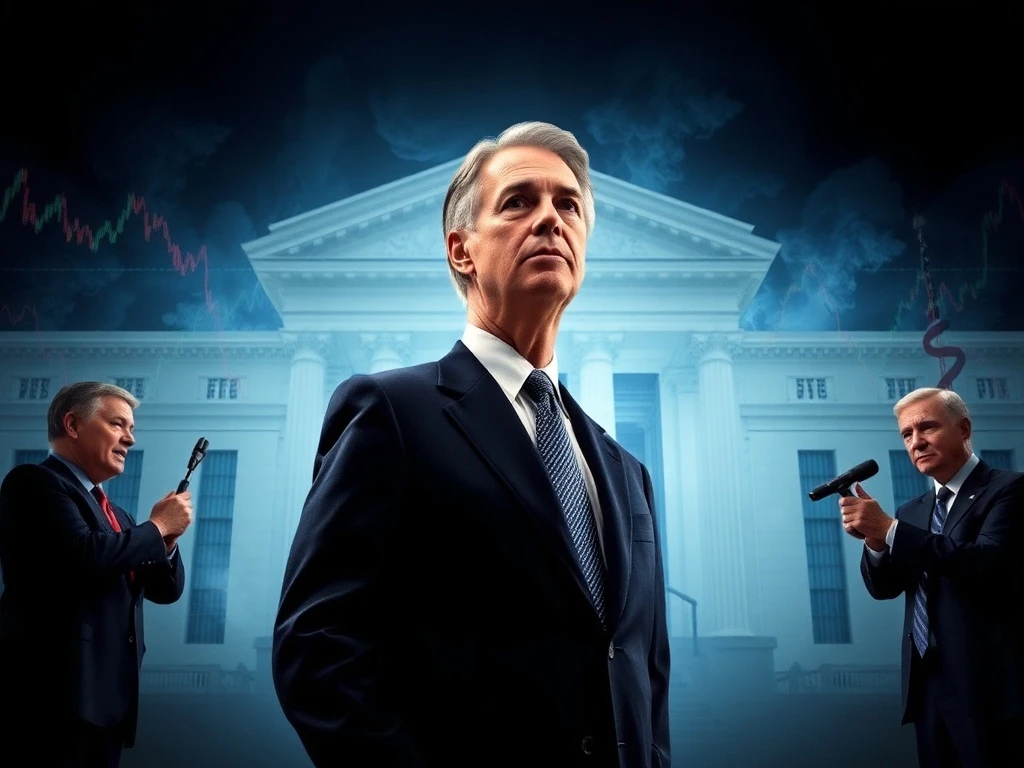Fed Defies Trump Pressure: Holds Rates Steady Amid 2.7% Inflation and 4.1% Unemployment

In a bold move, the Federal Reserve has decided to maintain interest rates despite mounting pressure from President Trump. With inflation at 2.7% and unemployment stable at 4.1%, the Fed’s decision highlights its commitment to data-driven policy over political influence. Here’s what this means for the economy and your investments.
Why Did the Fed Hold Rates Steady?
The Federal Open Market Committee (FOMC) opted to keep the benchmark rate unchanged, citing cautious optimism about economic resilience. Key factors influencing this decision include:
- Inflation at 2.7%: Above the Fed’s 2% target but not alarming enough to warrant immediate action.
- Unemployment at 4.1%: A stable labor market reducing urgency for rate cuts.
- Political Pressure: Trump’s public demands for rate cuts were outweighed by concerns over fiscal policies like expansive tariffs.
What Does This Mean for Future Rate Cuts?
Analysts predict the Fed may delay rate cuts until December 2025, with another potential cut in early 2026. Key takeaways:
- Data-Dependent Approach: The Fed will wait for more inflation and employment data before making decisive moves.
- Jackson Hole Symposium: A potential turning point for hints on September 2025 rate cuts.
- Internal Dissent: Some FOMC members advocate for earlier cuts, but a broader dovish shift is unlikely.
How Does Trump’s Fiscal Policy Impact the Fed?
Trump’s “One Big, Beautiful Bill Act” and expansive tariffs risk creating “fiscal dominance,” where government debt undermines the Fed’s inflation control. This could complicate future monetary policy decisions.
What Should Investors Watch For?
Focus on Powell’s upcoming speeches for subtle signals on:
- Inflation Risks: Any changes in language could shape market expectations.
- Labor Market Conditions: Stability or volatility will influence future rate decisions.
- Fed Independence: How the Fed navigates political pressure will be critical.
In summary, the Fed’s decision reflects a cautious approach, prioritizing economic stability over short-term political appeasement. While the path to rate cuts is clear, timing and magnitude depend on evolving data and fiscal policies.
Frequently Asked Questions (FAQs)
Why didn’t the Fed cut rates despite Trump’s pressure?
The Fed prioritized economic data, including stable inflation and unemployment, over political demands.
When can we expect the next rate cut?
Analysts predict December 2025, with another potential cut in early 2026.
How does Trump’s fiscal policy affect the Fed?
Expansive tariffs and debt risks could undermine the Fed’s ability to control inflation.
What should investors monitor?
Key indicators include inflation data, labor market conditions, and Fed communication.
Could internal dissent lead to earlier rate cuts?
While some FOMC members advocate for cuts, a broader shift is unlikely without stronger data.








